Witness Indonesia's noodle tapestry, where each strand weaves a story of culinary brilliance. Stir-fried strands dance in a savory symphony, a secret blend of meats, vegetables, and sweet soy sauce creating an enchanting melody. Noodle soups, diverse as the archipelago, whisper tales of unique broths and regional toppings, revealing the nation's culinary poetry. Whether cradled in flavorful meat broths or adorned with succulent chicken and aromatic spices, each noodle creation is a masterpiece, an artistic expression of Indonesia's culinary prowess. In every bite, discover the untold stories and the unique enchantment that makes Indonesian noodles a tasteful journey through flavors like no other.
Laksa
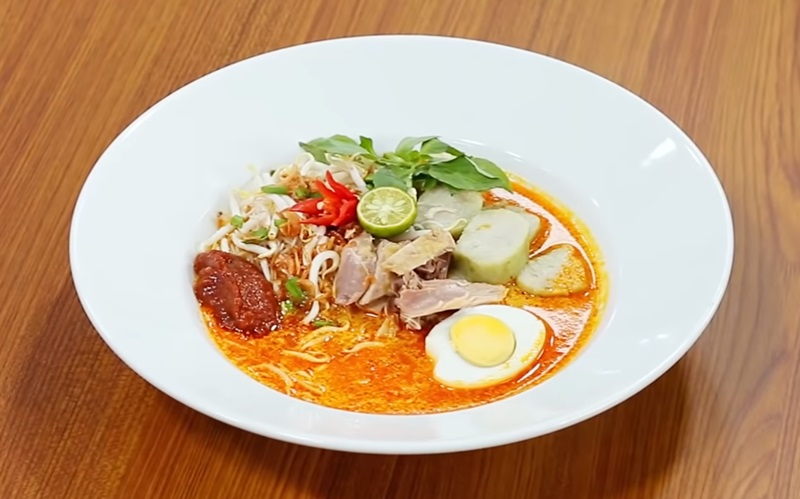
Laksa is a popular noodle dish that originates from Indonesia. It is a flavorful and aromatic dish that is loved by locals and tourists alike. The dish consists of thick rice noodles served in a spicy soup, typically made with a combination of coconut milk, curry paste, and various herbs and spices. The soup base of Laksa is what sets it apart from other noodle dishes. It is rich, creamy, and slightly sweet, thanks to the addition of coconut milk. The spices and herbs used in the soup, such as lemongrass, galangal, and turmeric, give it a distinct and fragrant flavor. Laksa is typically garnished with a variety of toppings, such as sliced chicken or shrimp, tofu puffs, bean sprouts, and fresh herbs like cilantro or Thai basil. It is often served with a side of sambal, a spicy chili paste, for those who enjoy an extra kick of heat. Whether enjoyed as a hearty meal or a comforting snack, Laksa is a delight for the taste buds. Its combination of flavors and textures make it a truly satisfying and memorable Indonesian noodle dish.
Mie Goreng
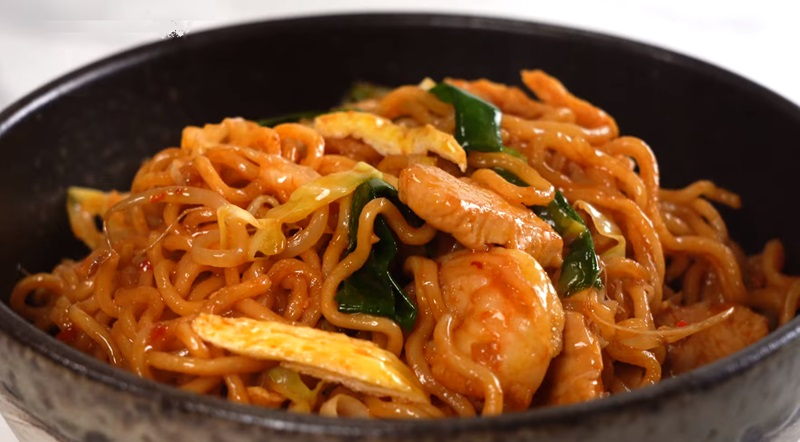
Mie goreng, a beloved Indonesian noodle dish, is celebrated for its delightful flavors and comforting textures. This versatile dish features stir-fried egg noodles, prized for their thickness and chewiness, offering a satisfying bite. Its adaptability allows for an assortment of ingredients, including vegetables like cabbage, carrots, and beansprouts, along with proteins such as chicken, shrimp, or beef. Prepared in a wok, the noodles and ingredients harmonize, creating a flavorful fusion. What sets mie goreng apart is its sauce, often a blend of soy sauce, kecap manis (sweet soy sauce), garlic, and spices, imparting a rich and savory essence. Variations may include chili or shrimp paste for an added kick. Garnished with crispy fried shallots and served with pickles or fresh lime slices, mie goreng is a beloved street food found throughout Indonesia. A delectable combination of flavors and textures makes mie goreng a must-try for any noodle enthusiast.
Idiyappam
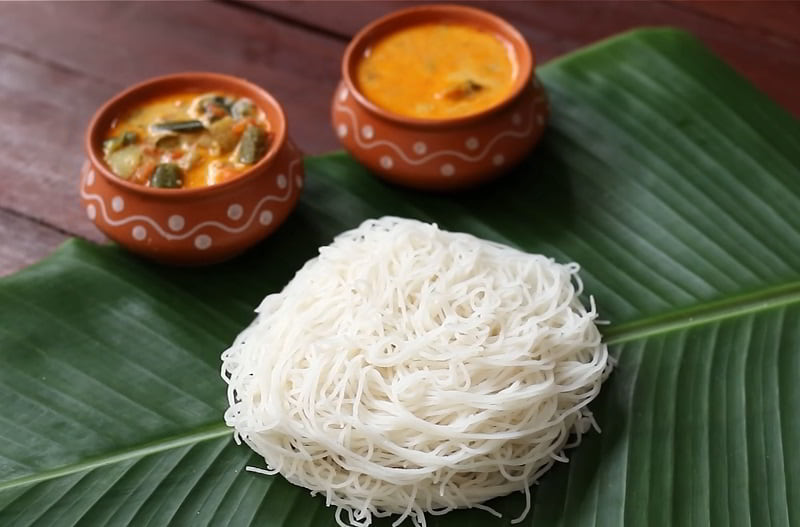
Idiyappam, also known as putu mayang in Indonesia, is a rice noodle dish that is loved for its simplicity and delicate flavors. It is made from rice flour, water, and a pinch of salt, which are mixed together to form a soft dough. The dough is then shaped into thin noodles. These noodles are then steamed until they become soft and slightly chewy. It is typically served with a variety of accompaniments such as coconut milk, spicy curries, or vegetable stews. The dish can be enjoyed as a breakfast item or as a light meal throughout the day. What makes putu mayang or Idiyappam special is its versatility. It can be paired with various flavors and ingredients, allowing for endless combinations and taste experiences. The noodles themselves have a mild, slightly sweet taste, which complements the bold flavors of the accompanying sauces and curries. Whether you prefer it spicy, tangy, or creamy, this dish offers something for everyone. So, if you're looking to explore the world of Indonesian noodles, Idiyappam is definitely a dish worth trying.
Mie Hokkien

Mie Hokkien is a popular Indonesian noodle dish that originated from the Hokkien Chinese community in Indonesia. It is characterized by its thick, chewy noodles, which are typically made from wheat flour and eggs. The noodles are stir-fried with a variety of ingredients, creating a flavorful and satisfying dish. The dish usually includes a combination of meat, seafood, and vegetables. Common ingredients include sliced chicken, shrimp, cabbage, carrots, and mushrooms. These ingredients are stir-fried together with the noodles, creating a harmonious blend of flavors and textures. Mie Hokkien is known for its rich and savory sauce. The sauce is made from a mixture of soy sauce, oyster sauce, garlic, and other seasonings. It adds depth and umami to the dish, enhancing the flavors of the ingredients. This dish is often garnished with crispy fried shallots and served with a side of sambal, a spicy chili condiment. The combination of the chewy noodles, flavorful sauce, and aromatic toppings makes Mie Hokkien a beloved Indonesian noodle dish that is enjoyed by locals and tourists alike.
Mee Rebus
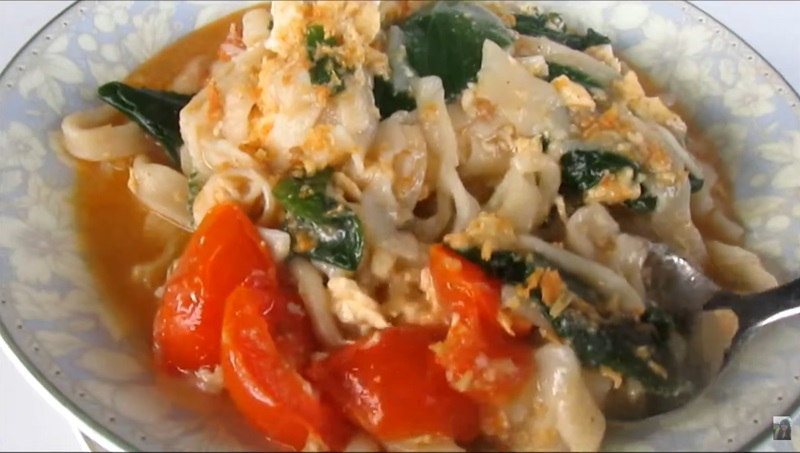
Mee rebus stands out as a beloved Indonesian noodle dish celebrated for its luscious and flavorful gravy. Featuring al dente yellow egg noodles, the dish is generously adorned with a thick and spicy gravy. This savory sauce is a fusion of ground peanuts, dried shrimp, garlic, shallots, and an array of spices, including turmeric, coriander, and cumin. Complementing the dish are additional toppings like boiled eggs, bean sprouts, fried tofu, and fried shallots, contributing to a delightful medley of textures and tastes. Mee rebus is a hearty and satisfying meal, often relished as a standalone delight or served as a side dish alongside Indonesian favorites such as satay or fried rice. A beloved street food, it graces the offerings of local food stalls and warungs across Indonesia. Whether savored at breakfast, lunch, or dinner, Mee rebus beckons noodle enthusiasts to savor the rich and authentic flavors of Indonesian cuisine.
Bakmi
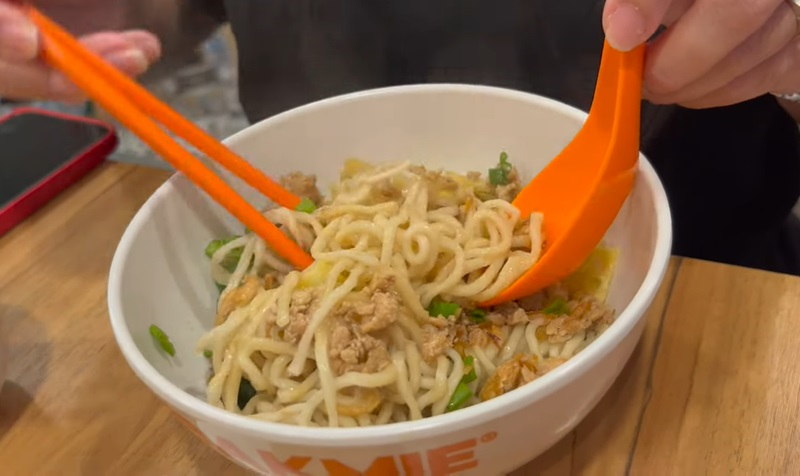
Bakmi is a popular noodle dish in Indonesia that is loved for its rich flavors and variety of toppings. It is a versatile dish with many regional variations but generally consists of egg noodles stir-fried with a combination of meat, vegetables, and aromatic spices. One of the most famous versions is Bakmi Ayam, which features succulent chicken slices, vegetables like bok choy and mushrooms, and a flavorful soy-based sauce. Bakmi Goreng, on the other hand, is a fried noodle dish that includes a mix of proteins like chicken, shrimp, and beef, along with vegetables and a savory sauce. Bakmi dishes often have a touch of sweetness and are commonly garnished with crispy fried shallots, fresh herbs like spring onions and cilantro, and a squeeze of lime juice for a tangy kick. Some variations also include a side of chicken broth or chili sauce to enhance the overall taste. Whether enjoyed as a quick street food snack or a satisfying meal, Bakmi dishes never fail to satisfy the taste buds with their tantalizing combination of flavors and textures.
Mie Ayam
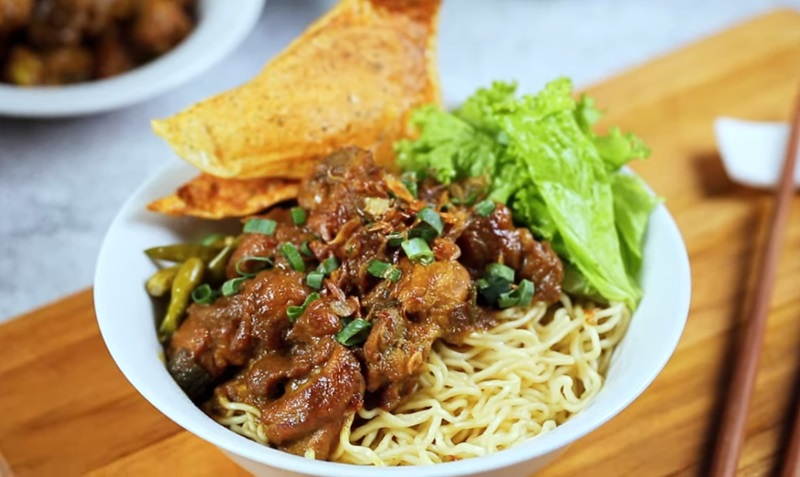
Mie Ayam, also known as Chicken Noodle, is a popular Indonesian dish that is loved by locals and tourists alike. This flavorful dish is a combination of yellow wheat noodles, tender pieces of chicken, and a variety of toppings and condiments. The star of Mie Ayam is the chicken, which is usually marinated in a blend of soy sauce, garlic, and spices before being boiled or stir-fried to perfection. The noodles are cooked until they are soft and springy, providing a delightful base for the dish. To enhance the taste and texture, Mie Ayam is typically served with a delicious broth made from chicken stock and various seasonings. This flavorful broth is poured over the noodles, adding depth and richness to the dish. Toppings such as crispy fried shallots, green onions, and steamed bok choy are added to add a burst of freshness and crunch. Mie Ayam is often enjoyed with a side of chili sauce or sambal, which can be adjusted to suit individual preferences for spiciness. This versatile dish can be found in street stalls, food courts, and even high-end restaurants throughout Indonesia, making it a beloved and accessible option for noodle lovers.
Kwetiau Goreng
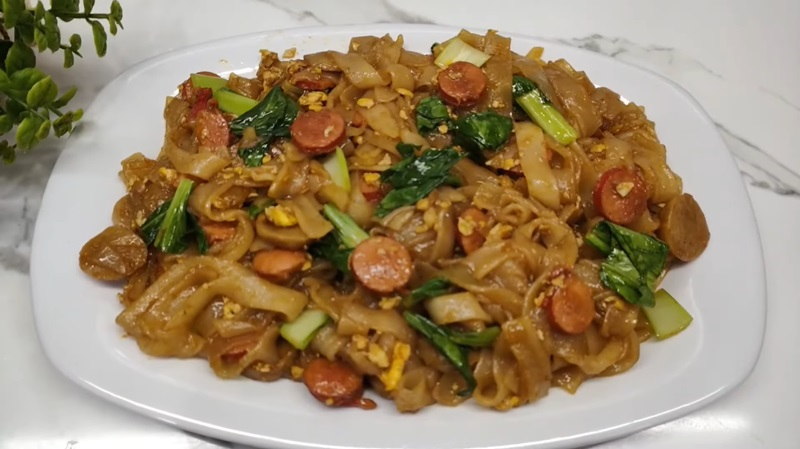
Kwetiau goreng is a popular Indonesian noodle dish that originates from Chinese cuisine. It is made with flat rice noodles, known as kwetiau, stir-fried with a variety of ingredients to create a flavorful and satisfying meal. The dish typically starts with the noodles being soaked in hot water to soften them before being stir-fried. The stir-frying process involves a combination of ingredients such as garlic, shallots, soy sauce, oyster sauce, and various spices. Additional ingredients like chicken, shrimp, beef, or vegetables are often added to enhance the flavor and texture of the dish. Kwetiau goreng is known for its savory and slightly sweet taste, with a hint of smokiness from the high heat used during the stir-frying process. It is often served with a side of fresh lime wedges and chili sauce for extra tanginess and spiciness. This dish is widely enjoyed throughout Indonesia and can be found in street food stalls, restaurants, and even household kitchens. Its versatility allows for different variations and regional adaptations, making it a beloved dish across the country.
Lor Mee
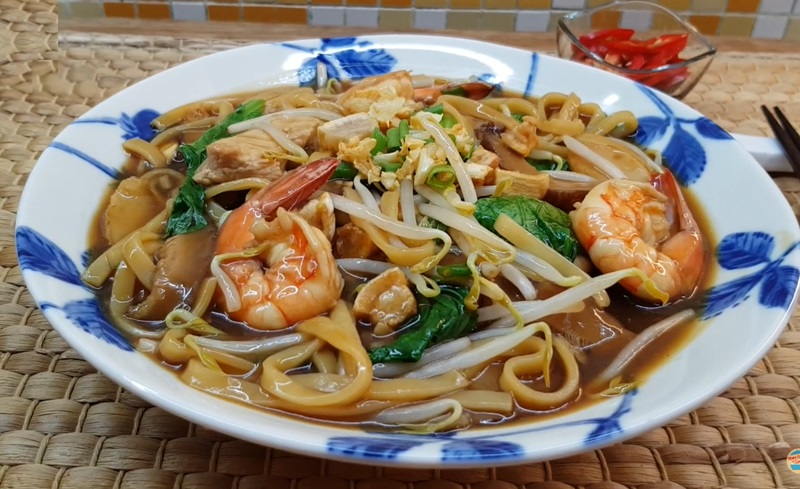
Lor Mee, a cherished Indonesian noodle dish with roots in the Hokkien Chinese community, is renowned for its heartiness and flavor complexity. Featuring thick yellow wheat noodles immersed in a rich, starchy gravy, its defining characteristic lies in the uniquely thick and adhesive sauce. Crafted from a blend of cornstarch, soy sauce, garlic, and diverse spices, this sauce blankets noodles cooked to a soft and chewy perfection. Adorned with braised pork belly, sliced chicken, fish cake, and hard-boiled eggs, additional toppings like bean sprouts, fried shallots, and chopped scallions contribute to a diverse culinary experience. A finishing touch of black vinegar drizzle and a dollop of sambal chili sauce enhances the flavor profile. Lor Mee, enjoyed predominantly for breakfast or lunch, offers comfort and satisfaction throughout the year. Its sumptuous and savory gravy, coupled with tender noodles and flavorful toppings, has endeared it to locals and visitors alike. Whether a noodle enthusiast or an adventurous palate, Lor Mee beckons with its enticing flavors and cultural authenticity, making it an irresistible culinary experience.
Bihun Goreng
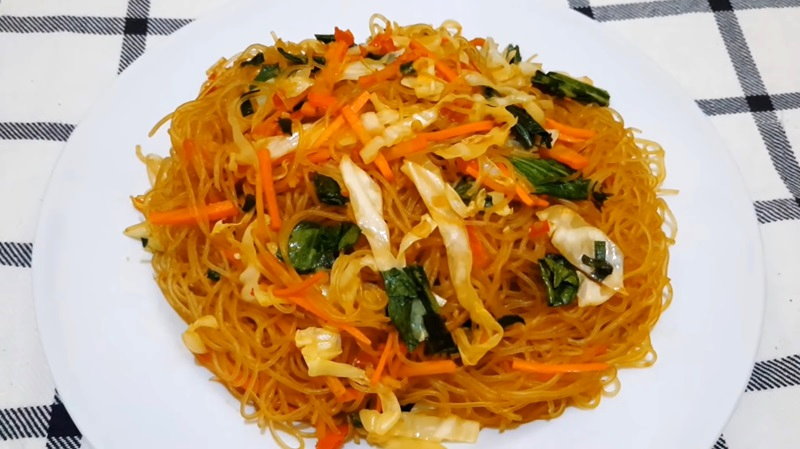
Bihun goreng stands out as a beloved Indonesian noodle dish, renowned for its delightful flavors and distinctive texture. Rooted in both Chinese Indonesian and Javanese culinary traditions, this dish shares a culinary association with mie goreng and kwetiau goreng. Its preparation involves the skillful combination of sweet soy sauce and bumbu, creating a harmonious blend of seasonings. The ingredients commonly used in bihun goreng encompass garlic, onion or shallots, along with beef, prawns, chicken, or sliced bakso (meatballs). The medley continues with the addition of Chinese cabbage, chili, egg, regular cabbage, tomatoes, and various vegetables. Often served with acar and adorned with fried shallots, this dish offers a symphony of flavors and textures that showcase the diversity and creativity of Indonesian cuisine. Bihun goreng stands as a flavorful representation of the rich culinary tapestry that has evolved through cultural influences in Indonesia.
Mie Jawa
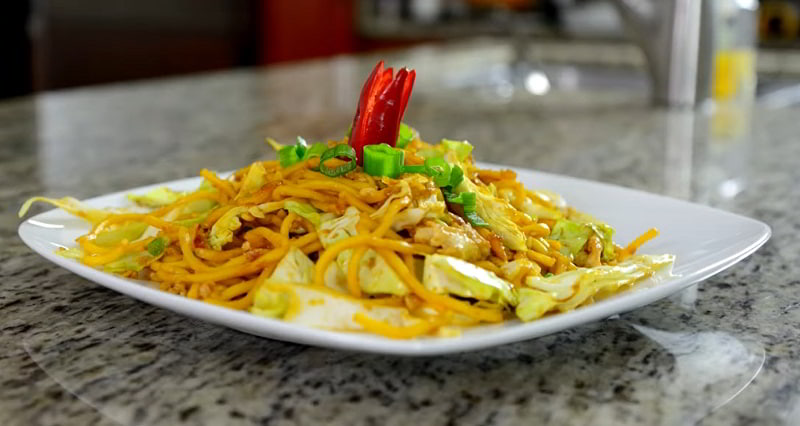
Mie Jawa, originating from Indonesia, is a traditional noodle dish celebrated for its distinct preparation and regional variations. This Javanese-style noodle dish typically features yellow noodles, stir-fried with a flavorful combination of ingredients. The dish is deeply rooted in Javanese culinary traditions, showcasing the unique taste and preferences of the region. Common ingredients in Mie Jawa include garlic, shallots, soy sauce, kecap manis (sweet soy sauce), and a mix of proteins such as chicken, prawns, or beef. The noodles are often complemented with vegetables like cabbage, carrots, and bean sprouts, adding both color and texture to the dish. Mie Jawa is frequently garnished with fried shallots and served with a side of lime for a burst of freshness. Throughout Indonesia, Mie Jawa may vary in its preparation and toppings, reflecting the local culinary influences of different regions. This dish stands as a flavorful testament to the diverse and rich gastronomic landscape of Indonesian cuisine.
Soto Mie
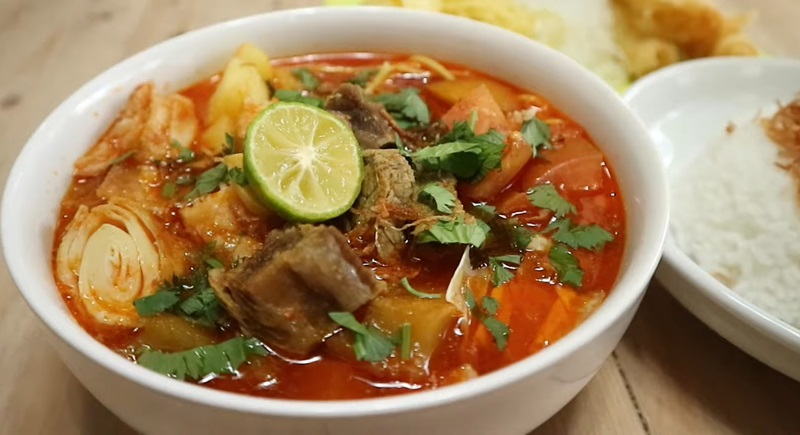
Soto Mie, a cherished Indonesian noodle soup, has earned widespread affection for its flavorful variations. The dish can be crafted with beef, chicken, or offals like kaki sapi (cow's trotters' skin, cartilage, and tendons) or tripes, offering a range of choices to suit diverse palates. Depending on personal preferences, individuals may opt for noodles, rice, or rice vermicelli as the base. The soup is a delightful medley of either noodles or rice vermicelli, complemented by slices of tomato, boiled potato, hard-boiled egg, cabbages, peanuts, bean sprouts, and beef, offals, or chicken. A fragrant broth, prepared from beef or chicken stock infused with various spices, is then poured over this vibrant combination. Condiments such as lime juice, sambal, fried shallots, vinegar, sweet soy sauce (kecap manis), and emping add the finishing touches, enhancing the overall sensory experience of Soto Mie.
Mie Aceh
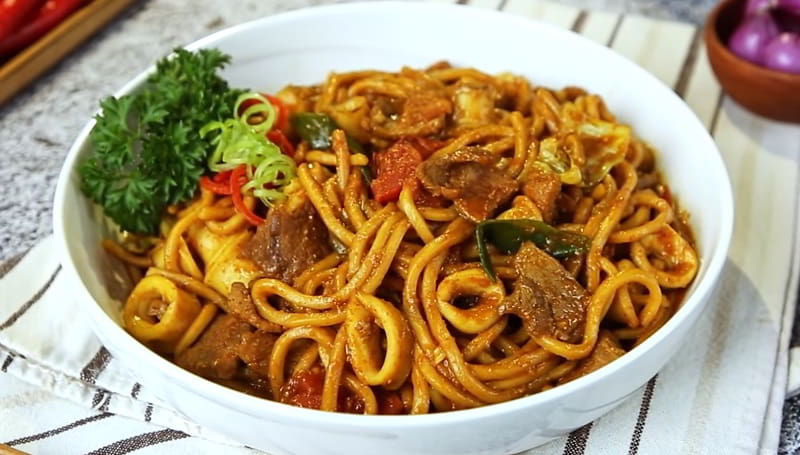
Mie Aceh, also known as mi Aceh, stands out as a spiced noodle dish native to Aceh, Indonesia. Often likened to Acehnese-style spaghetti, this culinary delight features thick yellow noodles accompanied by slices of goat meat, beef, mutton, lamb, and seafood like shrimp or crab. The dish is immersed in a rich, hot, and spicy curry-like soup, making it a robust and flavorful experience. The bumbu spice mixture, integral to Mie Aceh's distinctive taste, comprises black pepper, garlic, red chili pepper, cumin, cardamom, shallot, caraway, and star anise. These spices infuse the noodles and are cooked alongside cabbage, bean sprouts, celery, and tomato, adding depth to the dish. The noodles used in Mie Aceh are typically thick, and similar in size to Japanese udon or Italian spaghetti, and many restaurants ensure authenticity by crafting their noodles in-house.
Mie Kocok
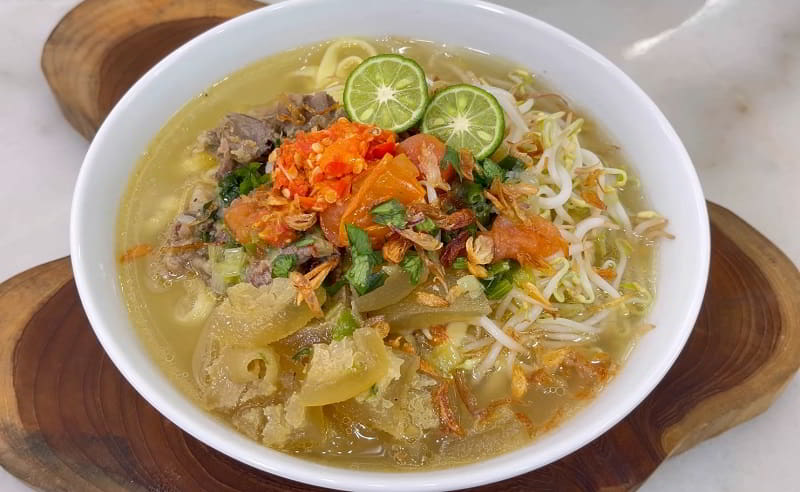
Mie Kocok, translated as 'shaken noodle,' is a distinctive Indonesian beef noodle soup originating from Bandung City, West Java. This culinary specialty features noodles immersed in a flavorful beef consommé soup, accompanied by kikil (beef tendon or slices of cow's trotters), bakso (beef meatball), bean sprouts, and a zest of kaffir lime juice. The dish is further adorned with crispy fried shallots, sliced fresh celery, and scallions, with some recipes incorporating beef tripe for added depth. The term "kocok" in Indonesian refers to the unique method of softening and cooking the noodles by gently shaking them in a handled porous tin container while simmering in hot water. Mie Kocok showcases flat yellow noodles and, for an extra burst of flavor and spiciness, might incorporate additions like kecap manis (sweet soy sauce) and sambal. This regional delicacy encapsulates the rich and diverse culinary landscape of Indonesia.
Ifumi
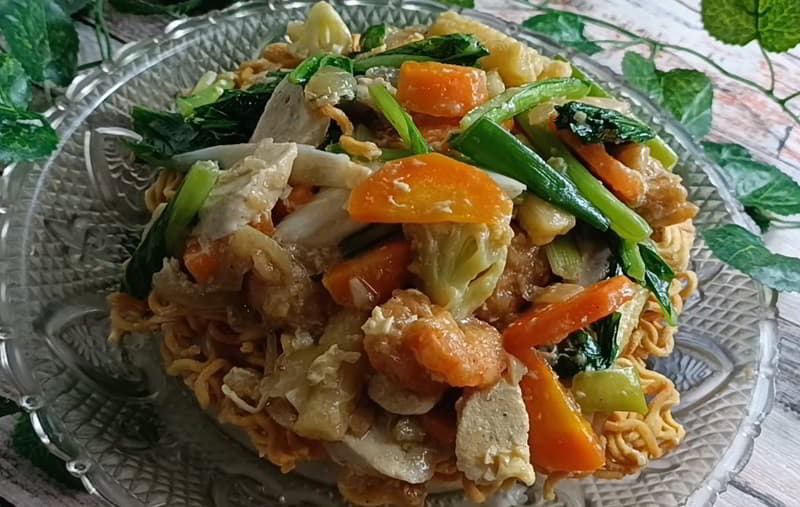
Ifumi, a popular Indonesian dish in Maritime Southeast Asia, is characterized by crispy deep-fried thick noodles served with a flavorful sauce, featuring meat or seafood and vegetables. A staple in Chinese Indonesian cuisine, Ifumi showcases the use of thick yi mein noodles, explaining the origin of its name. In contrast to softer Chinese Indonesian noodle favorites like mie goreng, Ifumi's unique appeal lies in its crispy texture, achieved through deep frying in palm oil. The accompanying vegetable sauce shares similarities with another Chinese Indonesian favorite, cap cai. Stir-fried carrots, garlic, cauliflower, cloud ear mushrooms, choy sum or napa cabbage, and onions are seasoned with ang ciu Chinese cooking wine, salt, oyster sauce, and sugar. This savory sauce, enriched with meat and vegetables, is prepared separately and generously poured over the dry crispy noodles just before serving, ensuring a delightful combination of textures and flavors.
Mie Bakso
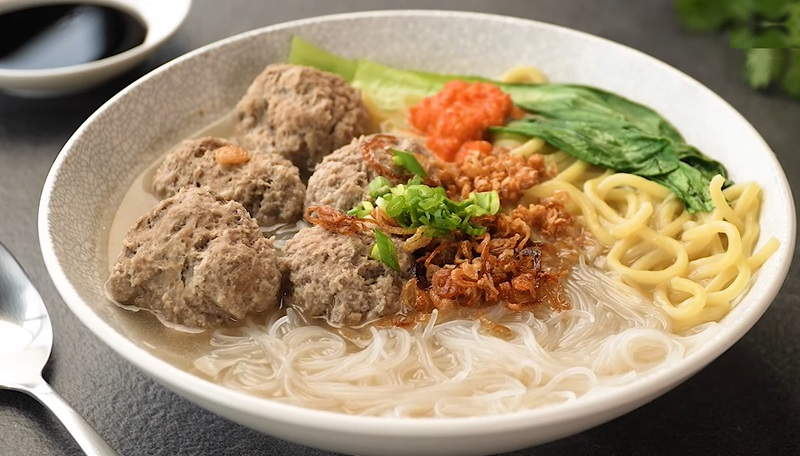
Mie Bakso, an Indonesian noodle soup, features bakso meatballs paired with yellow noodles and rice vermicelli. Prominent in Chinese Indonesian, Javanese, and Malay cuisines, this dish closely resembles soto mie, differing mainly in the use of meatballs instead of chicken slices. Widely available across Indonesia, Mie Bakso is enjoyed from bustling street vendors to upscale restaurants. As a quintessential street food, alongside soto, satay, and siomay, Mie Bakso holds a special place in Indonesia's culinary scene. Its popularity attests to the dish's widespread appeal, where the savory combination of meatballs, noodles, and flavorful broth captivates the taste buds of locals and visitors alike.
Kwetiau Ayam
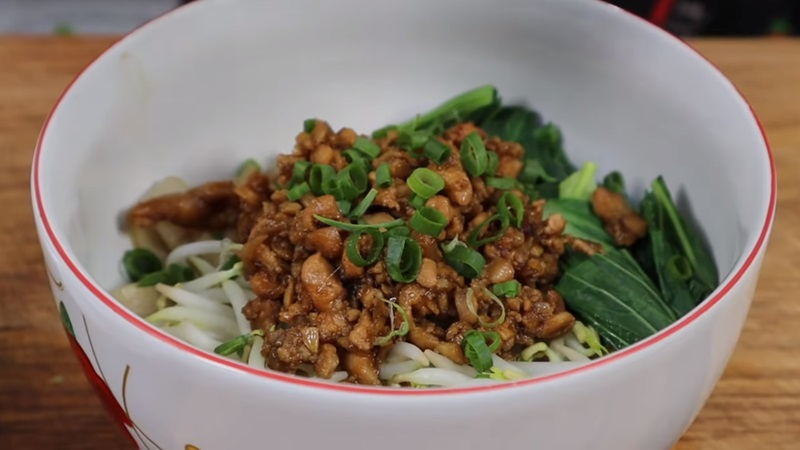
Kwetiau Ayam, also spelled as kuetiau ayam or kwetiau ayam kuah, is a prevalent Chinese Indonesian delicacy, featuring seasoned flat rice noodles adorned with diced chicken meat (ayam). Often considered as the kwetiau counterpart to the well-loved mie ayam (chicken noodles), this dish has deep roots in Chinese culinary traditions, reflecting the rich cultural fusion found in Indonesian cuisine. Recognized as a popular Chinese Indonesian offering, Kwetiau Ayam shares the spotlight with staples like bakso meatballs and mie ayam. From unassuming street-side warungs to restaurants, this dish is widely enjoyed across Indonesia. Given its near-identical recipe to mie ayam, eateries and food stalls typically offer both Kwetiau Ayam and bihun ayam alongside the popular chicken noodle dish, providing a delightful array of choices for diners.
Mie Gomak
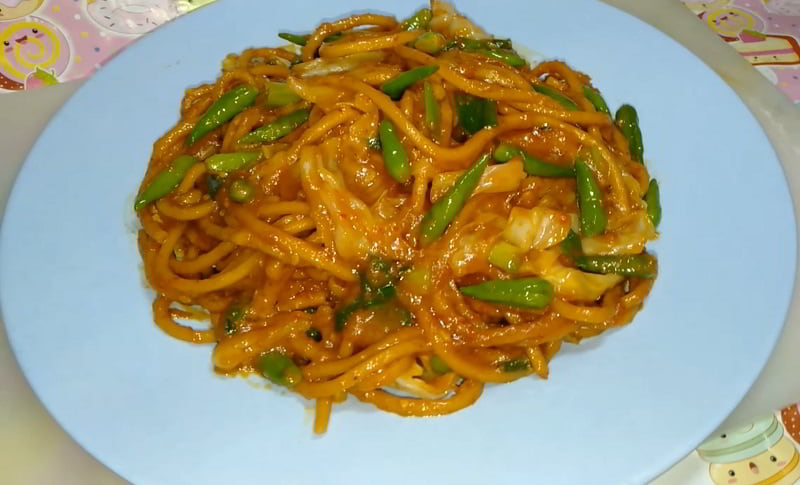
Mie Gomak stands out as an emblematic culinary gem from the Batak tradition, presenting a robust and spicy noodle soup renowned for its exquisite flavors. Originating from the Toba Batak region in North Sumatra, Indonesia, this dish boasts a distinctive broth crafted with coconut milk and andaliman, lending a uniquely flavorful essence. While it holds its roots as a specialty in the traditional Batak lands encircling Lake Toba, Mie Gomak has also gained recognition in the Sibolga and Tapanuli area. Distinguishing itself from conventional Indonesian noodles, Mie Gomak features the use of mie lidi, a thick noodle variety akin to spaghetti pasta. This characteristic has earned it the colloquial moniker of Batak-style spaghetti. Remarkably, Mie Gomak shares certain similarities with Mie Aceh from the neighboring province, underscoring the diverse culinary panorama of the Indonesian archipelago, replete with regional variations that allure both local and visitor palates alike.
Mie Celor
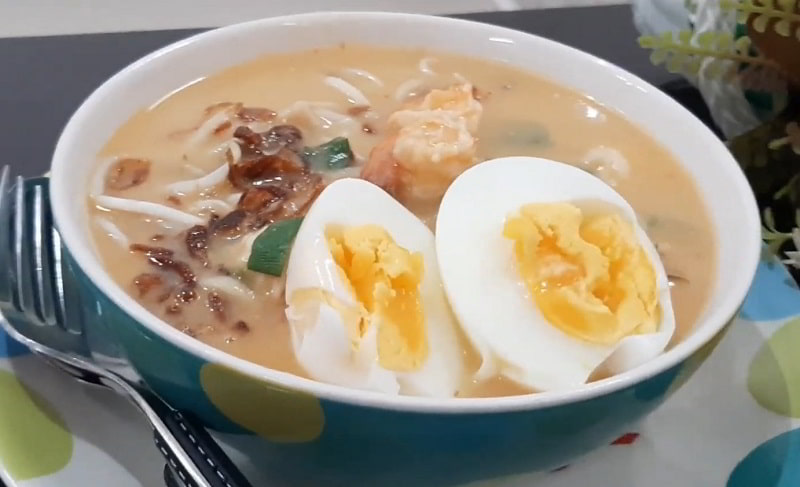
Mie celor, translating to "blanched noodles," represents a delectable Southeast Asian noodle soup, particularly renowned in Palembang city, South Sumatra, Indonesia. This culinary gem features large yellow wheat noodles, akin in size to Japanese buckwheat noodles, immersed in a sumptuous broth crafted from coconut milk and shrimp. The key to the broth's savory depth lies in the use of either ebi (dried shrimp) or fresh shrimp, contributing to its rich flavor profile. Served alongside the noodles are bean sprouts and hard-boiled eggs, adorned with sliced fresh celery, scallions, and fried shallots. If the broth incorporates fresh shrimp, the peeled shrimp becomes a topping, while dried shrimp powder is delicately sprinkled if dried shrimps are utilized. For an added kick of spiciness, a separate side of sambal might accompany the dish. Mie celor stands as a testament to the diverse and enticing culinary heritage of Palembang, inviting enthusiasts to savor its harmonious blend of textures and flavors.
Mie Kangkung
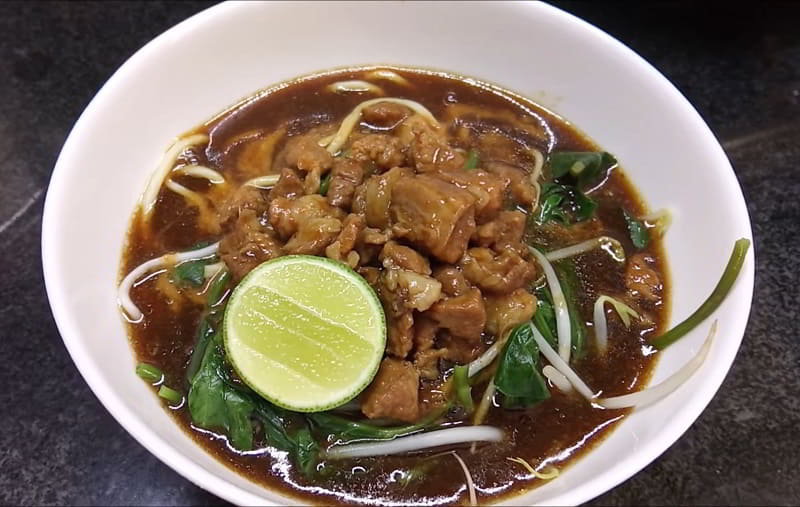
Mie kangkung stands as a flavorful Indonesian vegetable noodle soup originating from Betawi cuisine in Jakarta, Indonesia. This unique specialty involves yellow egg noodles bathed in a luscious brown soup, created from either chicken or beef broth, thickened with tapioca, and infused with garlic and kecap manis (sweet soy sauce). The focal point of the dish is the kangkung, or water spinach, imparting a refreshing green vibrancy. Complementing the noodles and kangkung are bakso meatballs, bean sprouts, mushrooms, and hard-boiled quail eggs. The culinary ensemble is elevated with a scattering of bawang goreng (fried shallots), a hint of kaffir lime juice, and the inclusion of sambal for a spicy kick. Mie kangkung presents a delightful symphony of textures and flavors, underscoring the culinary finesse of Betawi cuisine and beckoning diners to relish its distinctive amalgamation of ingredients.
Mie Kering
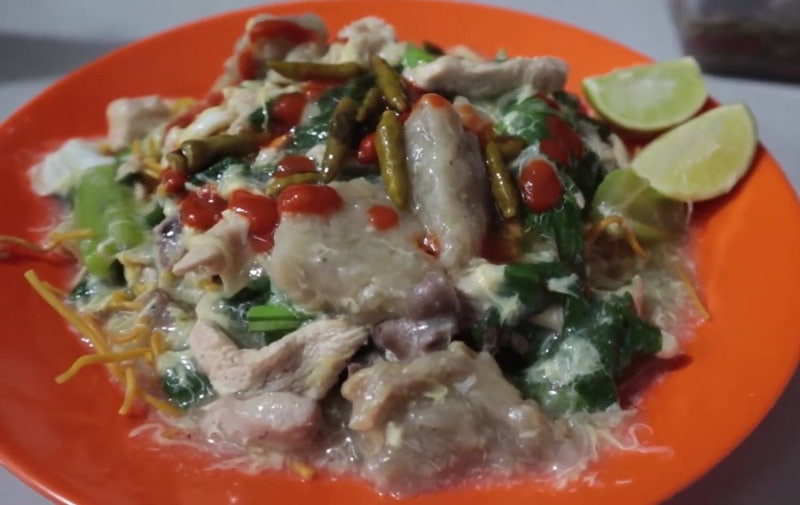
Mie Kering, also known as Makassar Dried Noodle, is a distinct Chinese Indonesian culinary creation. This dried noodle dish is served with a rich gravy and features sliced chicken, shrimp, mushrooms, liver, and squid, resembling the Chinese I fu mie with the main difference being the thinner noodles. The recipe was crafted by Ang Kho Tjao, a person of Chinese descent, who introduced it in Makassar during the early 1970s, gaining considerable popularity. Ang Kho Tjao passed down the recipe to his three children—Hengky, Awa', and Titi. Following his passing, the siblings continued the dried noodle shop business, each establishing their own venture. Titi's version, known as "Mie Titi," became particularly renowned in Makassar, making Mie Kering synonymous with her establishment. Among the famous dishes in Makassar, Mie Kering stands alongside Coto Makassar and Konro as a celebrated culinary delight.
Mie Cakalang
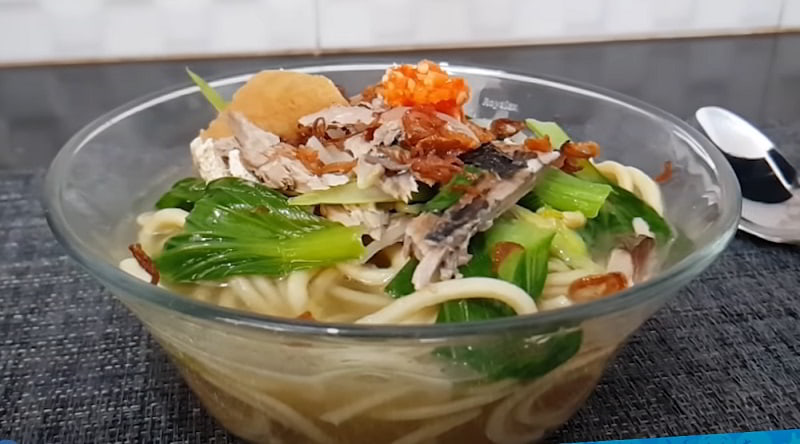
Mie cakalang is a popular Indonesian noodle dish that originates from Manado, a city in North Sulawesi. This flavorful dish is made with egg noodles, cakalang fish (skipjack tuna), and a variety of aromatic spices and herbs. To prepare mie cakalang, the cakalang fish is first cooked and shredded into small pieces. The noodles are then boiled until they are tender and cooked to perfection. The shredded fish is then stir-fried with spices such as garlic, onion, chili, and turmeric, creating a fragrant and spicy base for the dish. Once the spices are well incorporated, the noodles are added to the pan and tossed with the fish mixture, creating a harmonious blend of flavors. Mie cakalang is often served with a side of fresh vegetables, such as cucumbers and tomatoes, which provide a refreshing contrast to the rich and spicy flavors of the dish. This dish is known for its bold and complex flavors, combining the umami of the fish with the heat of the spices. Mie cakalang is a must-try for noodle lovers looking to explore the diverse and delicious cuisine of Indonesia.
Mie Koclok

Mie Koclok, meaning 'shaked noodle,' is a distinctive Indonesian chicken noodle soup, cherished in Cirebon City, West Java. This culinary specialty is characterized by noodles served in a porridge-like soup with a white hue, created from a mixture of chicken broth and coconut milk thickened with corn starch or tapioca. Complementing the hearty soup are bean sprouts, shredded chicken breast, hard-boiled egg, cabbage, and a burst of flavors from kaffir lime juice. The dish is elegantly garnished with crispy fried shallots, sliced fresh celery, and spring onions. Mie Koclok presents a harmonious blend of textures and tastes, showcasing the creativity of Indonesian culinary traditions. This beloved chicken noodle soup reflects the regional flavors of Cirebon and stands as a testament to the diverse and rich gastronomic landscape of West Java.
Mie Caluk
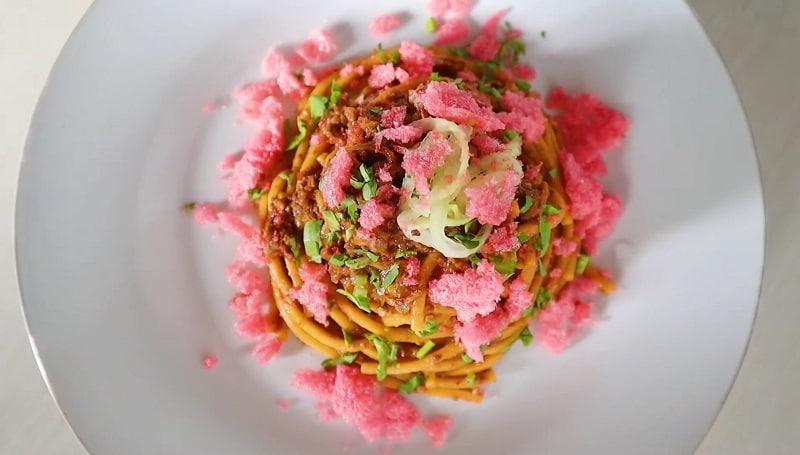
Mi Caluk, a traditional Indonesian-Aceh noodle delicacy, is commonly encountered in traditional markets across Pidie Regency and Pidie Jaya Regency. This noodle dish is distinguished by a flavorful and thick spicy sauce, crafted from a blend of tomato, ground peanuts, chili pepper or chili sauce, and coconut milk, and seasoned with lemongrass, shallots, citrus leaf, and garlic. Served alongside pieces of sliced cucumber, vegetables, and krupuk, the presentation of mi caluk bears a slight resemblance to spaghetti. Characterized by smaller servings, mi caluk is aptly categorized as a snack rather than a full meal. As a result, vendors of mi caluk typically operate in makeshift stalls, different from the more formalized food court setups commonly found in Aceh. This culinary creation stands as a representation of the regional flavors found in Aceh, offering a delightful and spicy noodle experience.
Mie Kopyok
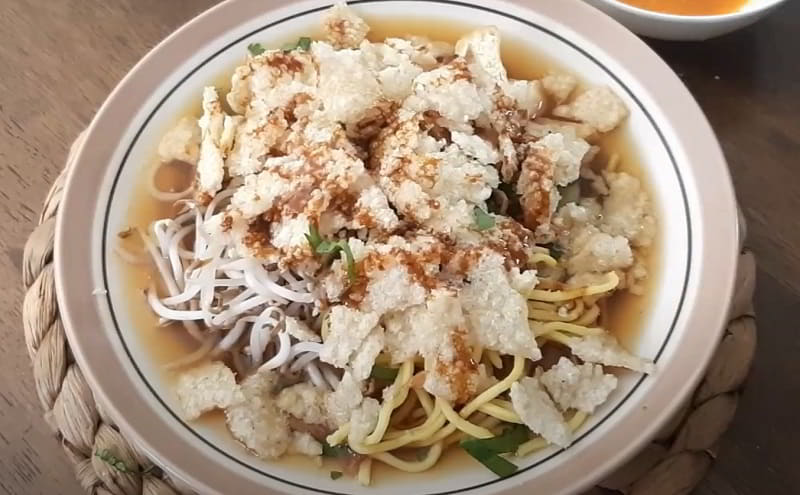
Mie kopyok is a popular Indonesian noodle dish that originates from the city of Surabaya in East Java. It is a simple yet flavorful dish that showcases the rich culinary heritage of the region. The dish typically consists of thick yellow noodles that are cooked until al dente, then topped with a fragrant broth made from spices, chicken stock, and soy sauce. What sets mie kopyok apart from other noodle dishes is the addition of kopyok, which refers to the small pieces of crispy fried pork fat that are sprinkled generously on top of the noodles. These crunchy morsels provide a delightful contrast in texture to the soft noodles and add a burst of savory flavor to each bite. Mie kopyok is often served with various condiments such as pickled vegetables, fried shallots, and sliced chilies to enhance the taste and provide a touch of spiciness. It is a popular street food option and can be found in food stalls and warungs (small local eateries) throughout Surabaya. Whether enjoyed as a quick lunch or a late-night snack, mie kopyok is a beloved Indonesian dish that satisfies cravings for both comfort food and bold flavors. Its combination of noodles, broth, and crispy pork fat make it a truly unique and memorable culinary experience.
Mie Tarempa
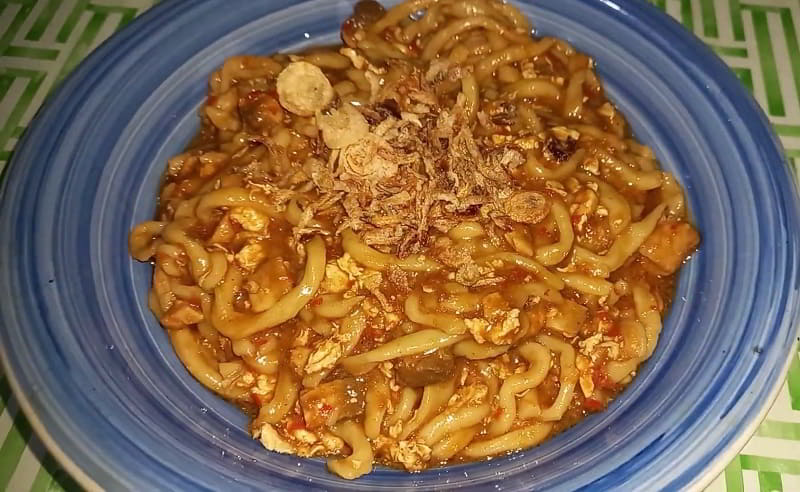
Mie Tarempa, a popular noodle dish in the Riau Islands, originated in the Anambas Island Regency. Distinctive for its reddish appearance, broad and chewy noodles, and the option to choose different types of meat, Mie Tarempa offers a unique culinary experience. The flavor profile is a delightful blend of sweet, sour, and spicy notes, providing a harmonious taste despite the presence of oil in the dish. Surprisingly light on the palate, Mie Tarempa is considered an affordable and favored choice among locals. The term "Mie" translates to noodles in Indonesian, while "Tarempa" refers to a small town situated in the Anambas Regency, emphasizing the dish's regional connection and cultural roots.
Mie Combor
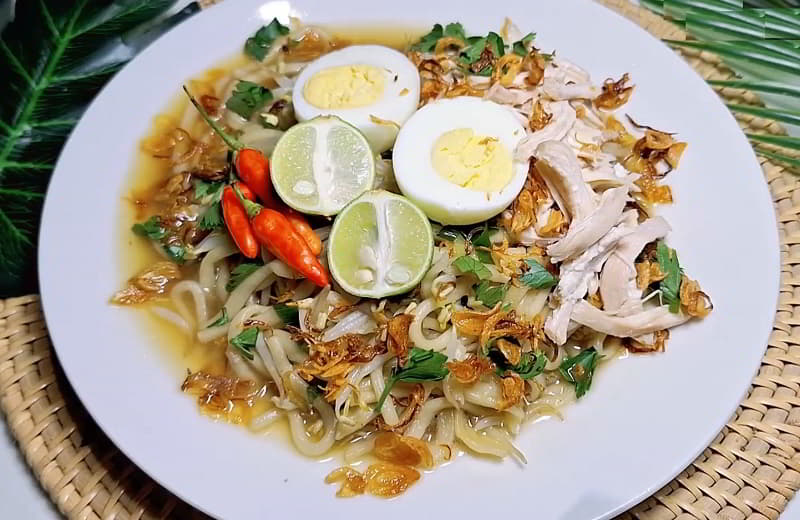
Hailing from the Kraksaan district in Probolinggo, Mie Combor is a distinctive noodle soup known for its abundant gravy. The term "combor," rooted in Javanese, aptly describes the copious amount of flavorful sauce that characterizes the dish. This noodle soup features a harmonious blend of ingredients, including noodles, bean sprouts, free-range chicken, and a salted duck egg. The combination of these elements contributes to the rich and satisfying taste of Mie Combor, creating a culinary experience that reflects the regional flavors of Probolinggo. With its unique preparation and hearty ingredients, Mie Combor stands as a testament to the diverse and delicious offerings found in Indonesian cuisine, particularly in the Probolinggo region.





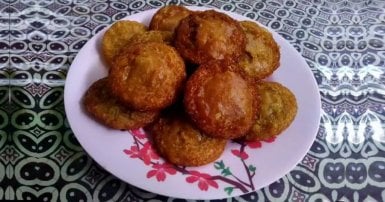
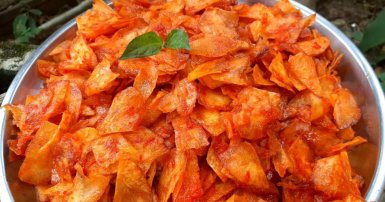

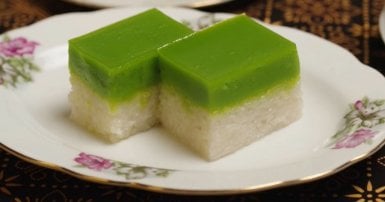
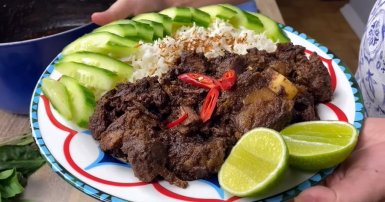
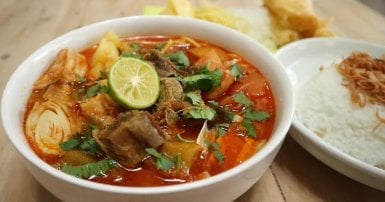
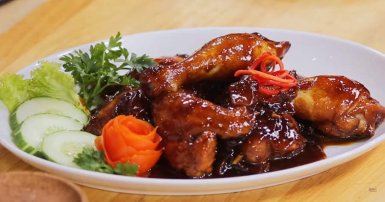

-1709813013.jpg)


